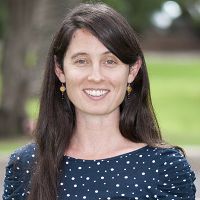Murphy et.al., 2014
Impact of Wildfire on Microbial Biomass in Critical Zone Observatory
Murphy M., Fairbanks D., Chorover J., Gallery R., Rich V. (2014)
Abstract EP23B-3590 presented at 2014 Fall Meeting, AGU, San Francisco, CA, 15-19 Dec.
-
Catalina-Jemez, INVESTIGATOR
-
Catalina-Jemez, INVESTIGATOR
Abstract
The recovery of the critical zone following disturbances such as wildfire is not fully understood. Wildfires have increased in size and intensity in western US forests in recent years and these fires influence soil microbial communities, both in composition and overall biomass. Studies have typically shown a 50% post-fire decline in overall microbial biomass (µg per g soil) that can persist for years. There is however, some variability in the severity of biomass decline, and its relationship with burn severity and landscape position have not yet been studied. Since microbial biomass has a cascade of impacts in soil systems, from helping control the rate and diversity the biogeochemical processes occurring, to promoting soil fertility, to impacting the nature and structure of soil carbon (C), fire’s lasting impact on it is one mechanistic determinant of the overall post-fire recovery of impacted ecosystems. Additionally, microbial biomass measurements hold potential for testing and incorporation into land surface models (NoahMP, CLM, etc.) in order to improve estimates of long-term effects of climate change and disturbances such as fire on the C cycle. In order to refine our understanding of the impact of fire on microbial biomass and then relate that to biogeochemical processes and ecosystem recovery, we used chloroform fumigation extraction to quantify total microbial biomass C (Cmic ). One year after the June 2013 Thompson Ridge fire in the Jemez River Basin Critical Zone Observatory, we are measuring the Cmic of 22 sites across a gradient of burn severities and 4 control unburned sites, from six depth intervals at each site (0-2, 2-5, 5-10, 10-20, 20-30, and 30-40 cm). We hypothesize that the decrease in microbial biomass in burned sites relative to control sites will correlate with changes in soil biogeochemistry related to burn severity; and that the extent of the impact on biomass will be inversely related to depth in the soil column. Additionally, as the project progresses, we will relate microbial biomass to microbial functional assays as proxy for biogeochemical activity, and test variation by landscape position and aspect.
Citation
Murphy M., Fairbanks D., Chorover J., Gallery R., Rich V. (2014): Impact of Wildfire on Microbial Biomass in Critical Zone Observatory. Abstract EP23B-3590 presented at 2014 Fall Meeting, AGU, San Francisco, CA, 15-19 Dec. .
 This Paper/Book acknowledges NSF CZO grant support.
This Paper/Book acknowledges NSF CZO grant support.
Explore Further


